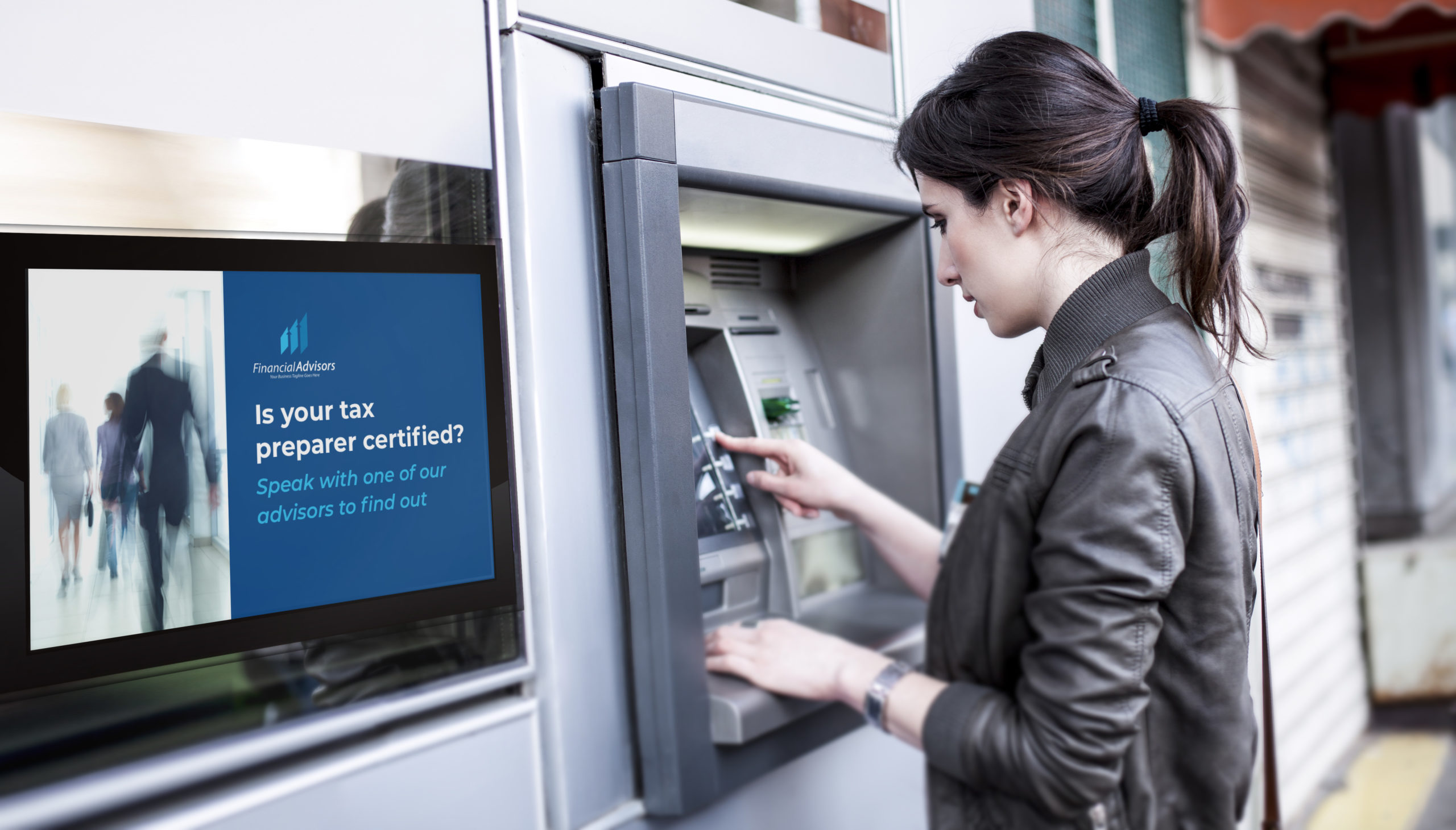As an industry, retail banking has long favored a conservative approach to marketing and branding. Experts agree that it could stand to shake things up a bit. Financial institutions large and small leverage all kinds of tactics to jumpstart the customer experience from afar, but sometimes their in-branch persona doesn’t match their virtual spaces. This is where adding digital signage to your bank comes in.
With dynamic visuals and eye-catching content, digital signage literally bridges the gap between mobile and in-person banking, creating a seamless transition between the online banking portal, mobile app, and the teller line. With nearly 90% of the banking public adept at using mobile banking tools, consumers have come to expect their bank or credit union branch to match their digital experience and vice versa.
But how can financial institutions straddle the line between a well-deployed digital trend and a popular gimmick? Start by making these five benefits your primary goals.
Why You Should Have Digital Signage in Your Bank
Capture Your Visitors’ Attention
From video walls to wayfinding graphics, 24-hour window displays to dynamic self-service solutions — the possibilities for digital signage are only limited by your imagination. A bright screen with stationary or moving content immediately draws the eye, turning a would-be static sign into a dazzling billboard for your brand.
Digital signage can engage and inform anyone who steps into your branch, whether it’s advertising monthly interest rates, answering frequently asked questions, or promoting your institution’s new app. What’s more, engaging graphics placed near customer service hubs (like the teller counter) can give the illusion of shorter wait times; if customers or members have something to watch or read while they wait, time flies.
Think outside the branch by pulling in local news channels, your institution’s social media feeds, or customer video testimonials.
Stay Flexible
If the retail banking industry has learned anything in recent years, it’s that flexibility is the new must-have superpower.
With lines blurred between the workplace and the home, consumers increasingly need access to all their information in one place, preferably with a tap of their finger. Younger demographics and the sustainably-minded also favor digital resources over paper, which is excellent news for your digital signage program.
For every piece of digital content you feature in-branch, provide a QR code that visitors can scan to access the same information at home. Busy customers and members will appreciate the opportunity to read up on your institution’s newest offerings at their leisure — and since the information on printed collateral can quickly become outdated, you can save time, money, and hassle by updating digital content in real time from one source.
Deliver Personalized Experiences
The shopping errand has evolved into the retail experience — and banks and credit unions have been taking notes. While products and services are still at the heart of retail, consumers are increasingly drawn to companies that provide an overall memorable experience.
This means personalizing the in-branch experience for each visitor (or each type of visitor). If certain demographics visit your branch at certain times of day, schedule your digital signage content to capture the ideal audience. Retired folks in the morning? Feature digital banking demos and financial security tips. Millennials and young parents on the way home from work? Promote current mortgage rates and financial literacy programs for the whole family.
If your digital signage has touchscreen capabilities, let your branch visitors call the shots by filling out customer or member surveys, choosing content that appeals to them, or leaving testimonials.
Improve Employee Experience and Communication
Any workplace runs smoothly when all team members are on the same page (or screen). With digital signage, bank and credit union employees have access to the same real-time information as their customers and members — especially if that information is also integrated with their institution’s mobile app, virtual platforms, and website. The time savings are real when everyone is in alignment.
No need to keep it strictly business! Using your digital displays to celebrate employee achievements, play employee interviews and testimonial videos, or share photos from team-building events. Content like this boosts employee morale and shows your branch visitors you have a unified, committed team.
Increase ROI
No one likes digging for information from their service providers, especially when it comes to a sensitive topic like money. Consumers favor brand transparency and are very quickly turned off if they feel like a company is withholding information or making things too complicated for them.
The more informed your customers and members are about your institution’s offerings, the more likely they are to make purchases and stick with you long term, increasing your ROI. This means making customer-facing information readily available and timely — and digital signage near the teller queue is the perfect way to deploy it. This way, if a branch visitor is interested in a product or service they’ve just seen advertised, they have immediate access to an employee who can help with next steps.
Are You Ready to Install Digital Signage in Your Bank?
Digital signage can also help reduce staffing costs, which benefits your bottom line. More customer self-service capabilities means that fewer employees are needed in-branch, especially when it comes to facilitating routine transactions or product tutorials.
A simple screen can redefine the retail banking experience — what you put on it is up to you!
AUTHOR BIO: Nate Baldasaro is the co-founder of The Element Group, a full-service firm that specializes in designing, building, and remodeling financial institutions. Nate and the Element team partner with banks and credit unions to develop brand identity, select markets and sites, and implement creative messaging and merchandising strategies across entire financial networks.
